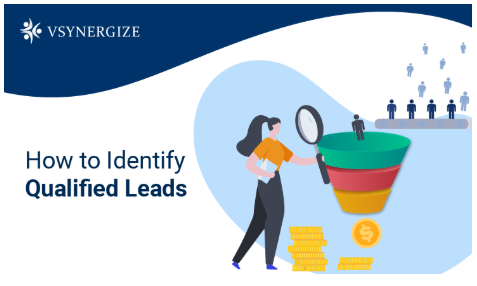How to Identify Qualified Leads

Considering 73% of most B2B leads are not sales-ready, it becomes very important to answer this question, “What makes a qualified lead”? To begin with, a qualified lead is a lead that is worth pursuing because of a high probability of converting into a sale.
By delivering qualified leads you enable the sales team to make faster closures and make the sales cycle shorter. Lead qualification, thus, does not mean passing on all possible prospects to the sales development teams but sifting through the lead bank which reduces the volume of the leads but ensures higher lead quality.
What are the parameters that determine a qualified lead? There are several lead qualification frameworks that can help you spot if your prospect is a qualified lead or just a dead end. In this blog, we discuss a few of them:
1. BANT
The BANT (Budget, Authority, Need, and Timeline) methodology is one of the oldest and most popular lead qualification frameworks and identifying:
Budget – Does the lead have enough money to buy the product?
Authority – Are they are in a position to make a purchasing decision?
Need – Do they have a business problem that your product/ service can solve?
Timeline- Does the prospect intent to make a purchase within a defined timeline?
By assessing these parameters the lead generation team can identify if the lead is likely to convert to a sale in the short-term. Those leads that pass the BANT test can be called qualified leads. However, the BANT methodology misses a few marks since a ‘buying authority’ can be more than one person and might need individual buy-in.
It also might make a lead generation team act prematurely if the timeline for the buy-in is longer. Instead of nurturing the lead, BANT cycles the lead into a closed lost queue which can lead to missed opportunities.
2.CHAMP
CHAMP (Challenges, Authority, Money, and Prioritization) is the new BANT 2.0. According to this methodology, identifying the ‘challenges’ and the pain points that businesses face become the first step towards leads qualification. It is only on identification of the challenges that the product on offer can be aligned to the solution.
On identifying the challenges, the decision making ‘authority’, decision-makers, and influencers have to be identified irrespective of the organizational hierarchy.
Next comes ‘Money’ in the qualification process. If the targeted prospects coffers are not adequately full, then the lead does not qualify. However, with careful probing, lead generation professionals can identify if the prospect will be able to make a purchase if some manageable adjustments to the pricing model are made.
Lastly, the lead generation professionals have to identify where the product or solution ranks on the buyer's priority list and then define a timeline for the sale’s closure.
3. ANUM
ANUM is another spin on BANT. Here the first criterion of qualification is ‘Authority’. According to this methodology, the lead generation professional must first assess if the person that he/she is speaking to is a decision-maker.
‘Need’ for the product or service on sale comes next in line as that helps in identifying what challenges the business is facing and how the product or service on offer can mitigate that.
Next comes ‘Urgency’ which determines where the ‘Need’ stands on the priority list and helps the lead generation professional direct all the messaging accordingly.
Finally, instead of ‘Budget’ ANUM focus on ‘Money’. According to this methodology, the lead generation professional has to see if the prospect has the buying capacity and then prove the value of their service to generate a qualified lead.
However, BANT focuses on ‘Budget’ where the lead generation professional determines if a clear budget has been identified for addressing the challenges the business has been facing.
There are a few other lead qualification methodologies that are offshoots of the above-mentioned methodologies. However, for high-quality qualified leads, a lead generation professional cannot use any one of these methodologies in isolation.
Different businesses operate differently, people react differently, situations change - hence, it becomes essential for a lead generation professional to skilfully employ a permutation and combination of these methodologies to qualify a lead and nurture a lead until it is sales-ready.
For more assistance reach us now on 855-203-8196 or email at info@vsynergize.com
Other articles and publications:
Articles and publications of other companies:
- +1 (855) 203-8196
- 101 California Street, Suite 2710, San Francisco, CA 94111 United States
- www.vsynergizeoutsourcing.com










